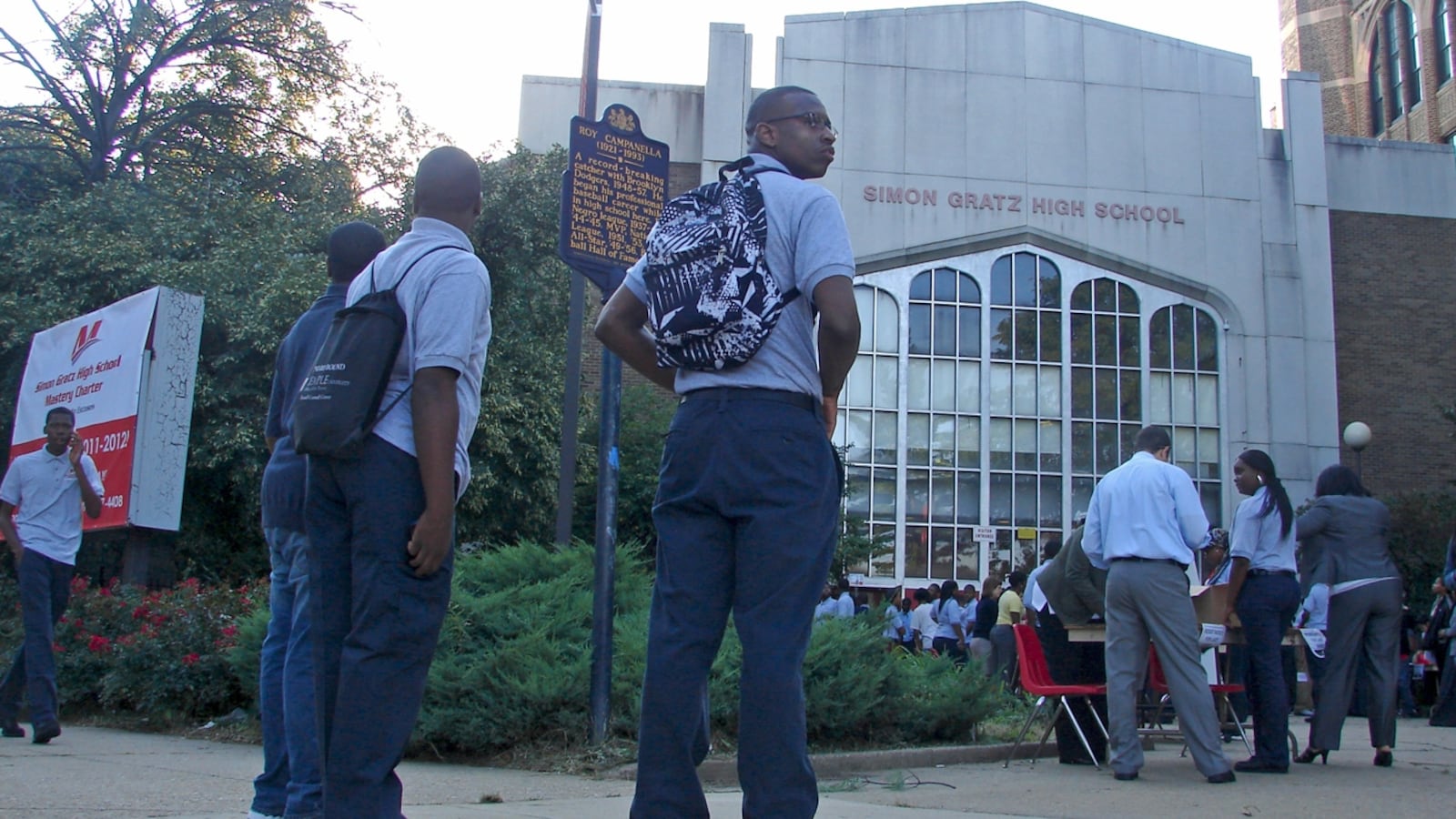This article was originally published in The Notebook. In August 2020, The Notebook became Chalkbeat Philadelphia.
In Philadelphia, gaining admission to a charter high school sometimes involves a scramble to gather burdensome paperwork – not to mention the luck of the draw.
But obstacles or not, thousands of students pursue the charter option. Notebook data show the city’s 35 charter high schools this year expected to enroll more than 15,000 students in grades 9-12.
Three of the District’s neighborhood high schools – Audenried, Olney, and Simon Gratz – are now run by charter groups as part of the District’s Renaissance initiative to turn around low-performing schools.
Those schools as well as three Mastery Charter Schools campuses – at Pickett, Thomas, and Shoemaker – function as neighborhood schools, accepting all students within geographic boundaries established by the District.
For parents and students sorting through options, frustrations abound.
While the District publishes information about neighborhood and special-admit high schools on its website, families must do their own homework to find information on charter schools using the Internet, visiting schools, or attending the High School Expo in late September.
“The high school option system in Philadelphia is more complicated and confusing than choosing a college or university,” said Ethan Bell, dean of students at the Charter High School for Architecture and Design (CHAD).
Other cities such as Denver have created universal enrollment systems – basically, one-stop shopping for both district-run and charter schools. Such a system is being studied by the Philadelphia Great Schools Compact education initiative.
Charter schools are publicly funded and cannot discriminate but can – and do – establish criteria for admission, said David Lapp, attorney with the Education Law Center in Philadelphia. “What does it mean to have reasonable criteria but not discriminate? That’s really the fundamental question, and there’s not a clear answer by a court,” Lapp said.
A recent District review found “significant barriers to entry” at numerous charter schools, according to a draft report. Among concerns: the length of the application – 24 pages at one school; asking for sensitive information; requiring multiple documents; restricting access to the application form; and requiring face-to-face interviews. Several of the charters up for renewal in recent months have caught criticism from the School Reform Commission for application or enrollment practices.
The Architecture and Design Charter School streamlined its application form but still requires applicants to submit two drawings. “Coming to CHAD, you are choosing a high school major. If you’re not at least somewhat interested in art, you’re not going to be happy here,” Bell said.
Other charter schools make the same point: Families learn about a school’s policies and approach as they go through the application process.
According to the District, a simple application should suffice, one that only seeks information needed to contact a student’s parent or guardian, conduct a lottery if necessary, and place the student in the appropriate grade. The process also should not involve any fee or require summer school.
When applications exceed space, the schools hold lotteries – and about three-fourths of charter high schools now report waiting lists for admission. As the District report noted, both the application due dates and the lottery dates vary greatly, further confusing families.
For students interested in the year-old Renaissance charters – Audenried, Gratz or Olney — enrolling is straightforward, and there are no waiting lists. Students seeking to attend Gratz, now run by Mastery, should be aware that school starts in August, not after Labor Day.
Olney has been drawing students from beyond its catchment area, many of them from Stetson Middle School, also run by ASPIRA.
“Kids in our catchment have priority, but we accept the others. We just do more with less if we surpass our enrollment cap,” said Alfredo Calderon, ASPIRA executive director.
Audenried also is seeing an uptick in enrollment, said Devon Allen, spokesman for Universal Companies, the school’s charter management organization.
Students are enthusiastic about new academies in health care, diesel/transportation, and culinary arts, including ties to chef Marc Vetri, as well as a partnership with Harcum College, he said.
The new managers at Audenried, Olney, and Gratz tout improved safety and academic performance since their takeovers in 2011.
“What I tell parents is this: First, your children will be safe; and second, they will excel,” said LaQuanda Jackson, Gratz principal.
Overall, however, the performance of charters here has been a mixed bag. The much-cited Stanford University/CREDO study of Pennsylvania charter school performance between 2007 and 2010 found that nearly half of charter schools have “significantly lower learning gains” than traditional public schools, while more than one quarter do better.
An earlier 2008 study by RAND and Research for Action found a “small positive effect on student achievement” for students attending charter schools in grades 9-12.


